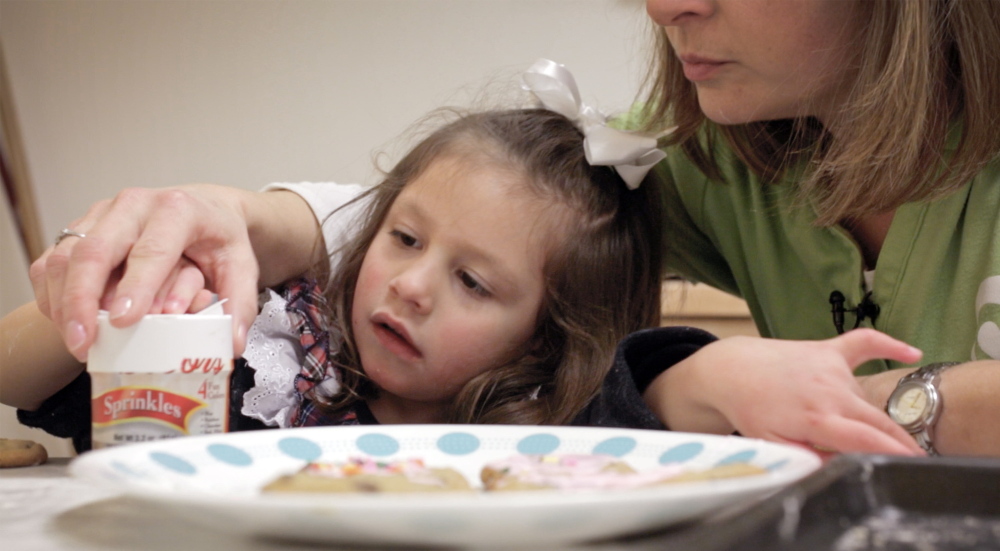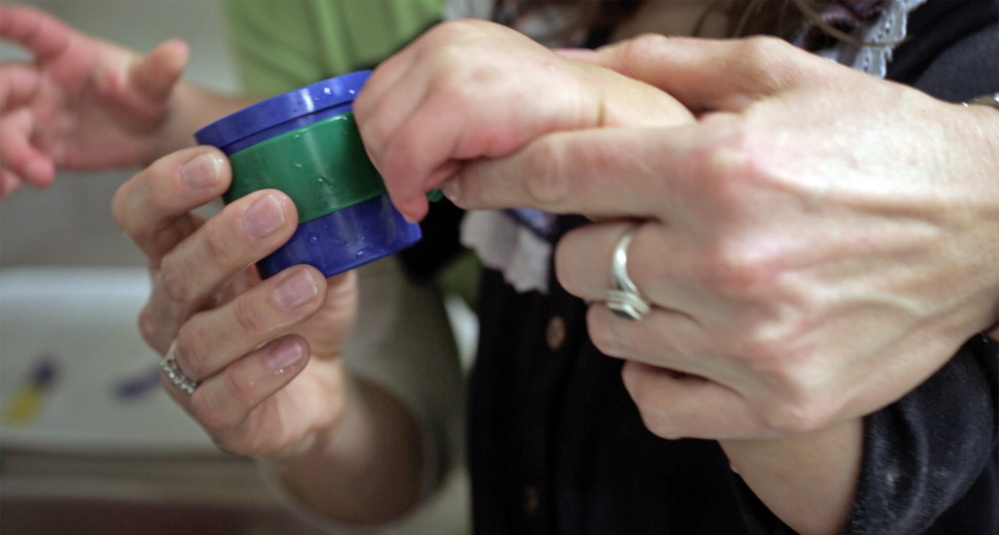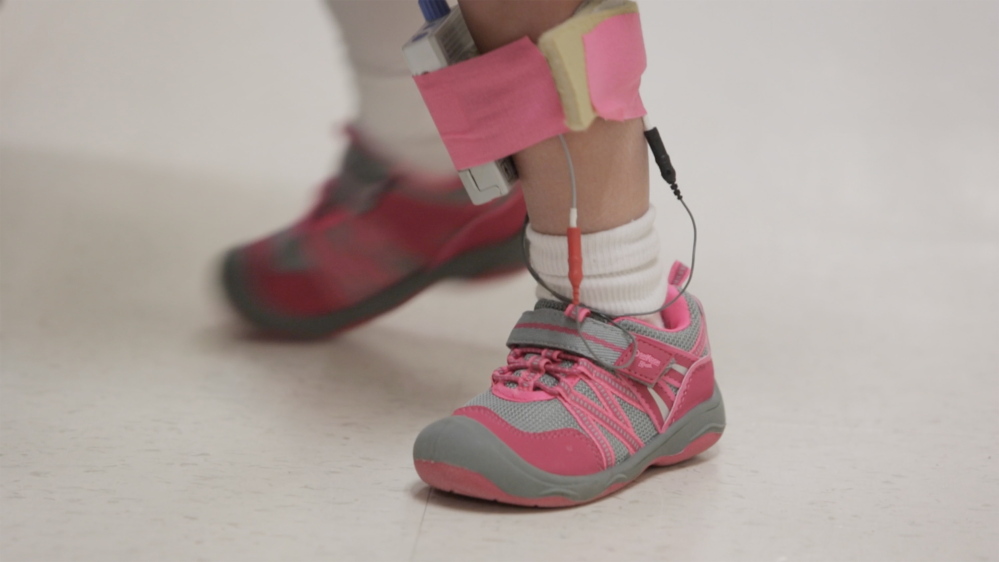Three-year-old Zoey Houston of Gorham, wearing bright-pink sneakers and a white satin bow in her brown hair, sits at a kitchen table at New England Rehabilitation Hospital of Portland with occupational therapist Amy Smith. They’re making chocolate chip cookies.
Smith hands Zoey a wooden rolling pin covered in flour.
“Lefty open. Open all the way, Zo,” Smith says as she takes the little girl’s left hand and carefully helps her open her fingers – which are curled in a tight fist – so that Zoey can hold the rolling pin.
“My focus is her left arm (and hand),” Smith says. “She can grasp, but she can’t really open it in a functional way.”
On Jan. 20, 2014, Zoey had a stroke that caused debilitating weakness on her left side.
She was at her grandmother’s house in Gorham while her mother was at work.
“I heard her kind of fussing,” says Zoey’s grandmother, Bonnie McClure. “I went up, and she was laying down, and I said, ‘Zoey, let’s get up,’ and she didn’t answer. And I looked at her, and I noticed that her mouth was drooping.”
McClure called Zoey’s mother and they raced to the doctor’s office, where Zoey – who had been running a fever – already had an appointment.
“We both had it in the back of our minds that this looks like a stroke,” McClure says, “but her age and whatnot, it’s like, kids don’t have strokes.”
It’s rare, but kids do have strokes – an estimated 3,500 to 4,000 children in the United States each year, according to the U.S. Centers for Disease Control and Prevention.
Stroke occurs when an artery to the brain becomes blocked or ruptures. Warning signs may include drooping of one side of the face or difficulty speaking. In young children, some symptoms of stroke aren’t immediately obvious.
“The big thing is a change in the child’s behavior,” says Dr. Paul Gerrard, the associate medical director of New England Rehabilitation. “(They may be) much less responsive. It may be they’re less active or they’ve stopped eating … and you might notice the child isn’t able to move part of their body. That’s the most concerning sign.”
Gerrard says children who recover seem to do so more quickly than adults.
“Kids seem to have an ability to use new parts of the brain to take over tasks that the injured parts were doing. This ability exists in adults but not to the degree it exists in children,” he said.
After two weeks in Boston Children’s Hospital, it was clear that Zoey was going to need every edge she could get.
“She was not using her arm at all,” her grandmother says. “She could walk, but it was very clumsy. She had to have a brace, because her foot would drag.”
What a difference a year makes.
As her mother and grandmother watch, Zoey runs down a wide, brightly lit hallway at the rehab hospital with a leash in her left hand. At the end of the leash is 5-year-old Grizzly, a therapy dog.
“(Grizzly) is such a motivator for her,” says Sharon Hartl, the director of therapy operations. “You can get her to hold the leash, pet the dog, walk down the hallway. She’s not focusing on her deficit.”
And when she’s not focusing on her deficit – now a slight limp in her leg and continued weakness in her hand and arm – her movements become more spontaneous.
She also has some high-tech help. Strapped to Zoey’s left leg is a small, square device about the size of a pack of cards that sends an electronic signal to the nerve controlling the muscle that lifts her left foot. It helps the muscle work harder and at the right time.
Zoey has worked hard, too, and it shows.
Although she still favors her right hand, she now uses her left more often in occupational therapy as she washes toy dishes, plays with a doll or grasps the handle of that rolling pin.
“It’s all about function,” Hartl says. “You can have someone do 20 hand curls, but if you don’t ask (the patient) to hold anything, they don’t gain as much function back.”
Zoey has been making gains just about every month.
“It’s been amazing progress,” says her mother, Jessica Houston, “from when we started to now.”
Zoey still has days when she struggles and becomes frustrated and easily overtired. That’s hard on her – and the people who love her.
“It’s been very difficult for all of us,” McClure says. “But to watch her, you know darn well that she’s persevering through the whole thing.”
And it’s that perseverance that gives her family hope for a full recovery in the months and years to come.
“We’ve been told that she should be … 100 percent back to normal,” Houston says. “Just a long road ahead of her.”
Send questions/comments to the editors.





Comments are no longer available on this story